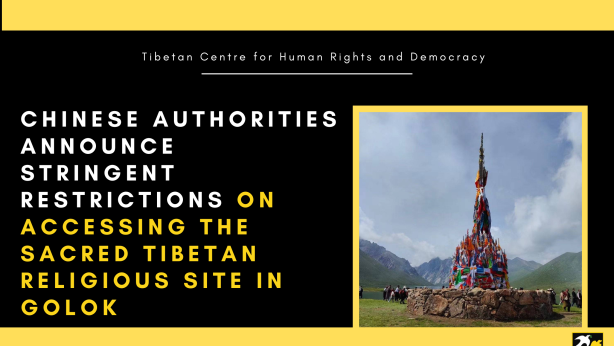Monk escapes Tibet after friend dies of self-immolation protest
Jigme Gyaltsen, 21, was a monk at Rongwo Monastery in Rebkong (Ch: Tongren) County in Malho (Ch: Huangnan) Tibetan Autonomous Prefecture, Qinghai Province. He joined Rebkong Monastery at 14. He was born in Kangtsa Village in Yadzi (Ch: Xunhua) County in Tsoshar (Ch: Haidong) Prefecture, Qinghai Province. Jigme Gyaltsen fled Tibet so that he could continue his religious studies in India, and to share the story of his friend and roommate Jamyang Palden, who passed away on 16 September 2012, six months after his self-immolation protest. Jigme Gyaltsen escaped Tibet in September 2012, travelling for one month and 22 days to reach India on 26 December 2012. He speaks to TCHRD:
“On 9 March 2012, Jamyang Palden, my roommate at Rongwo Monastery, set himself ablaze at Dolma Square near our monastery. Minutes after the self-immolation, monks took Jamyang Palden to a secure place in the monastery so that he would not get into the hands of the Chinese police. He was treated at the monastery for some months getting injections on his foot every month. There was not much hope for his survival as most of his body had burnt beyond treatment. Monks took turns to take care of him. He could not talk much and his voice was low. He could not eat much, just some diluted Tsampa porridge and kept saying, ‘My wishes are not fulfilled.’
“Six months later, on 16 September 2012, he passed away. He was 31 years old at the time. He was a good student and kept himself informed about events outside his monastery. He took great interest and responsibility for the Tibetan cause.
“I was also deeply saddened and heartbroken by the demise of Jinpa, 17, another monk from our monastery, who set himself
on fire.
“On 15 March 2008, I joined fellow monks from Rebkong Monastery to stage a protest march calling for the return of the Dalai Lama and human rights in Tibet. But the Chinese security forces suppressed the protest by detaining many monks. News of the monks’ arrest angered local Tibetans who joined the protests with the monks calling for the release of the detained monks. Following sustained protest and appeals from the Tibetans, the monks were released. However, Rebkong Monastery came under heavy security scanner since then.
“In March 2011, Tibetan school students in Rebkong rose up in protest against government attempts to marginalize Tibetan language and replace it with Chinese language in school curriculum. Hundreds of children from junior, middle and senior schools took to the street calling for equal rights and language rights. Monks from Rebkong Monastery and lay Tibetans joined the student protest. After two days, the protest ended when the school officials and teachers requested the students to stop the protest and return to their classes. The school authorities then petitioned the concerned government officials that the new bilingual education system would provoke more protests among the students and appealed for the withdrawal of the new policy. In 2011, the Chinese security forces increased its presence in Rebkong, building an army garrison near Rebkong Monastery.
“In 2012, the army garrison was completed and over 500 soldiers and security forces are stationed there. Similarly, the situation inside Tibet is deteriorating with displacement of Tibetan nomads, mining, destruction of environment. There is no freedom of movement for the Tibetans inside Tibet.”


